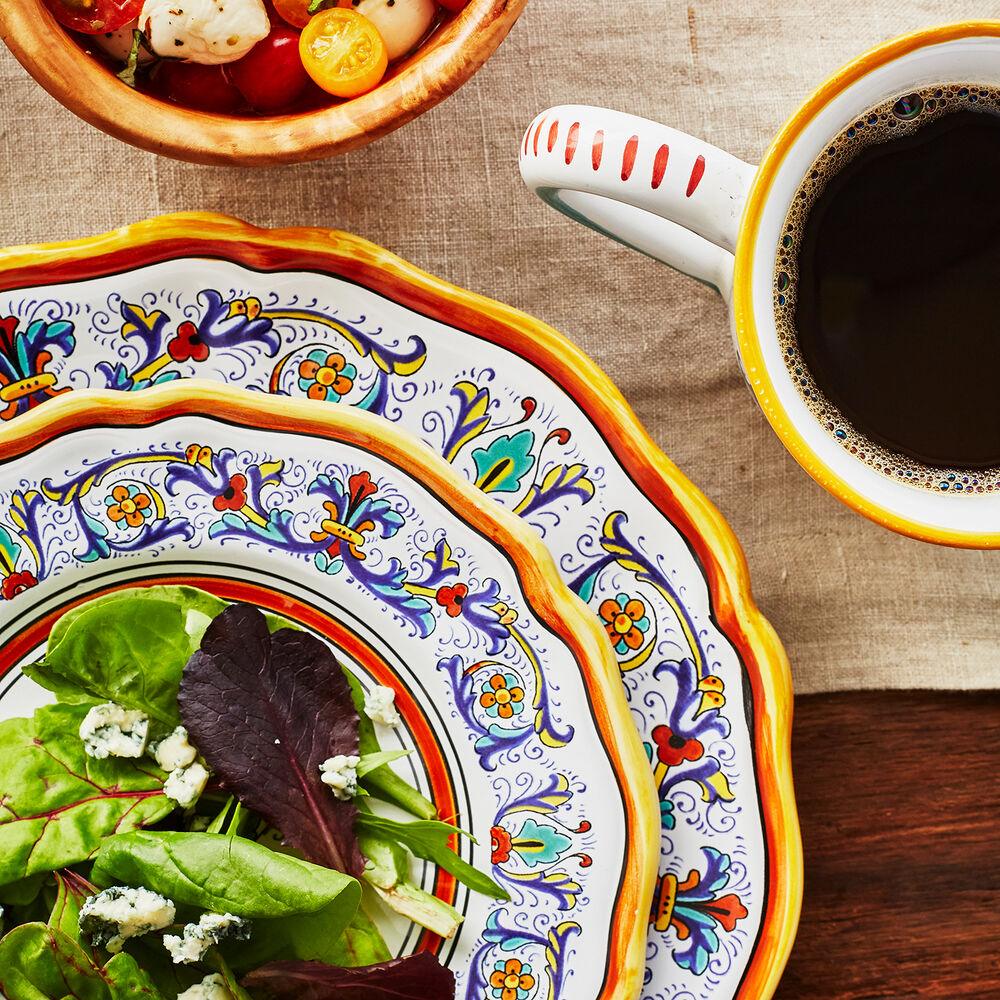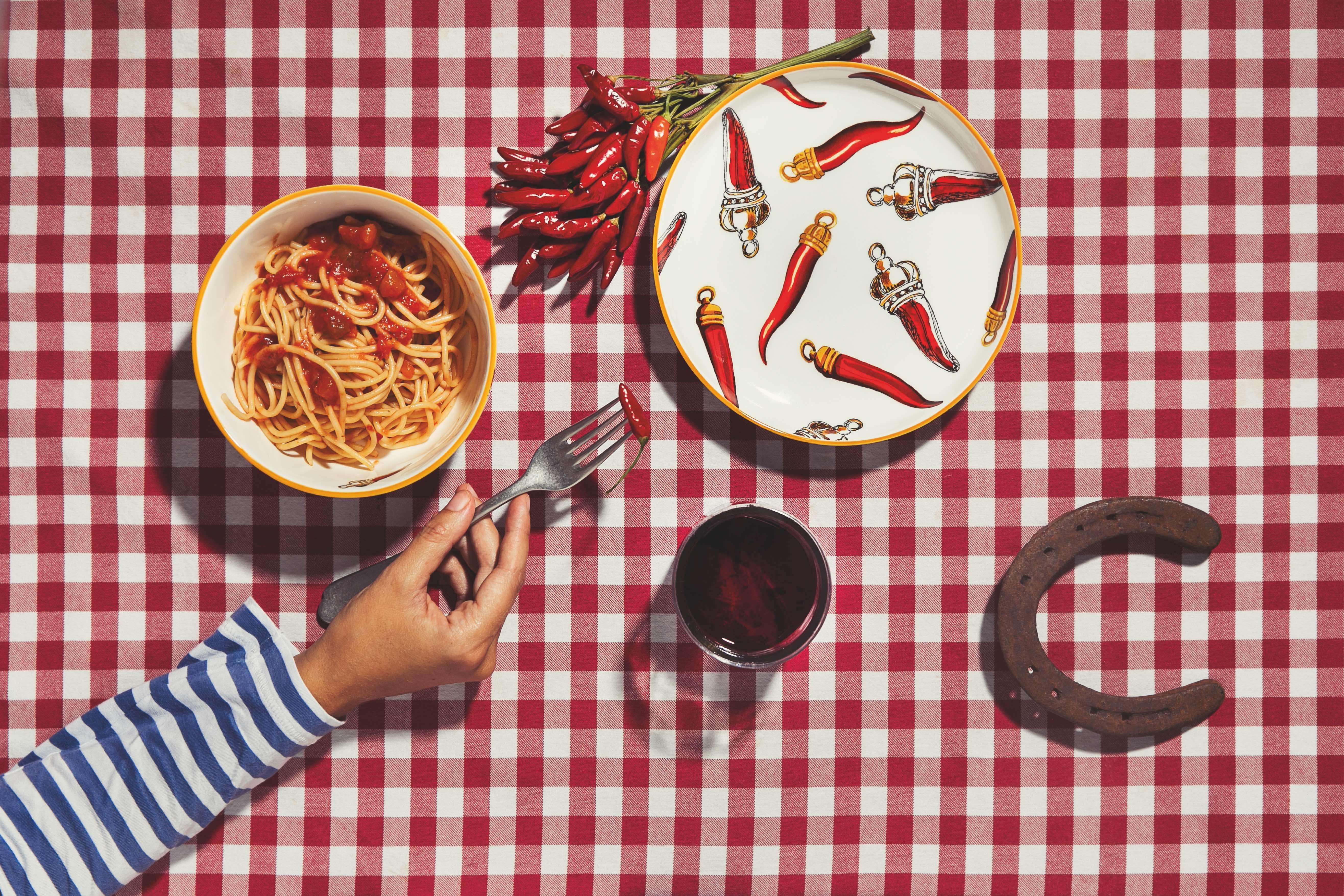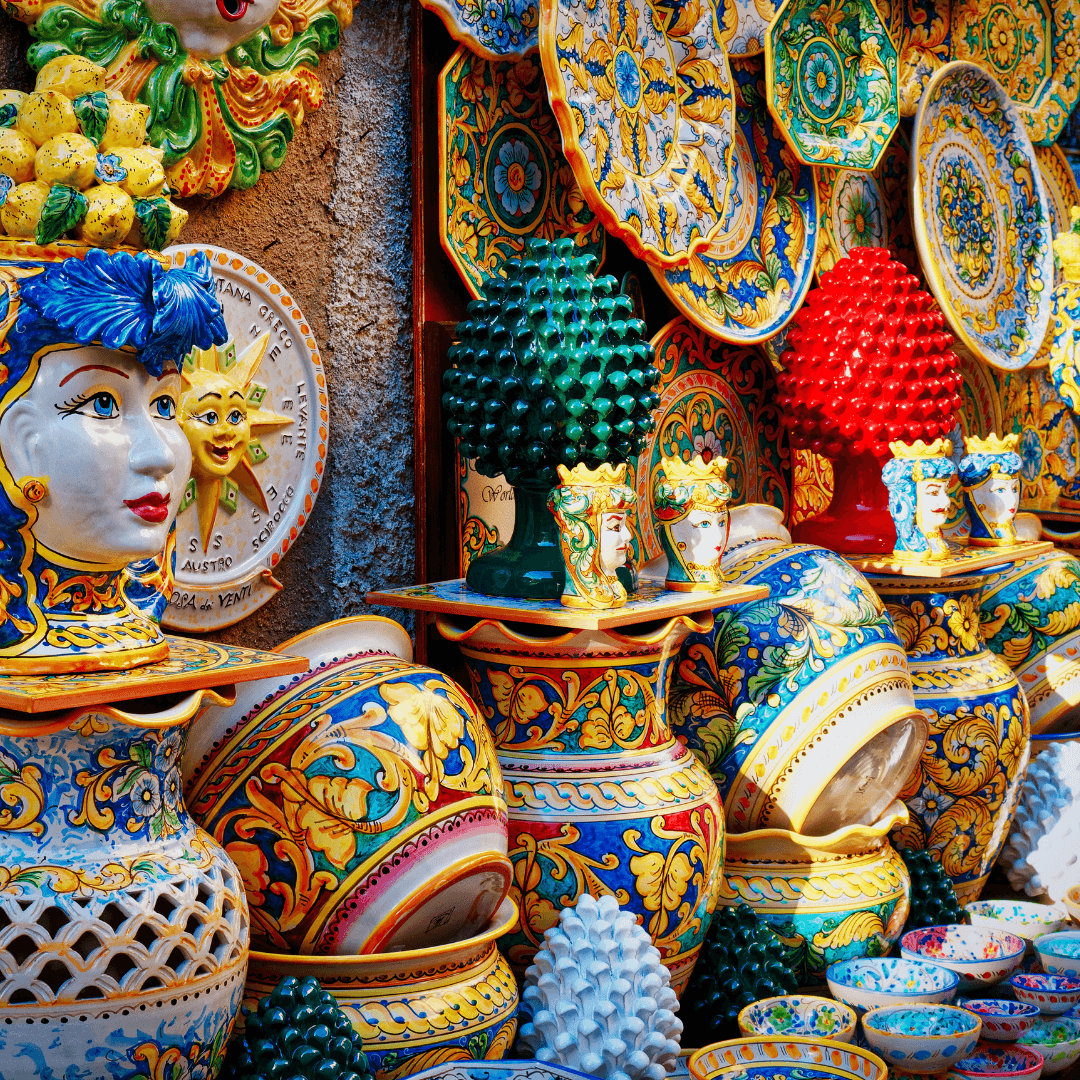
The Ceramics of Deruta - the quaint hilltop town between Rome and Florence
Deruta, located in Umbria, was most likely built on Roman foundations on a hill overlooking the Tevere river valley. Its name refers to the "ruin" of this vital location caused by the Gothic War in the sixth century.
The exceptional quality of the local clay was at the heart of the Deruta pottery tradition's inception. The manufacture began in the early Middle Ages and reached its artistic apex in the 15th and early 16th centuries. The experience of long-term calm corresponds to the pinnacle of Deruta majolica production and economic expansion. Favorable geographical and political conditions consolidated a wide range of technical and artistic experiences in Deruta, contributing to the creation of pieces that were distinctively innovative and qualitative.
The figurative decorations on Deruta ceramics, the use of new hues (blue, yellow, and orange), and the lusterware, which is rich in golden, iridescent qualities due to special glazes and a third firing, are noteworthy. During the same time period, forms developed as well, losing their practical qualities to become solely aesthetic. Ceramics and paintings were thought to be artistically and decoratively equivalent.
Deruta is now a wonderful little town with beautifully preserved historic churches and buildings. Its internationally acclaimed Museum of Pottery is an excellent place to study about the growth of Deruta ceramics shapes, patterns, and processes.
The area's main economic activity is still ceramics manufacture. More than 200 laboratories and factories make Deruta tableware and ornamental ceramics in a variety of classic and modern patterns, including Raffaellesco, Ricco Deruta, Arabesco, and Geometrics.

